Tradition of ploughing your own furrow to become king of the Lancashire countryside
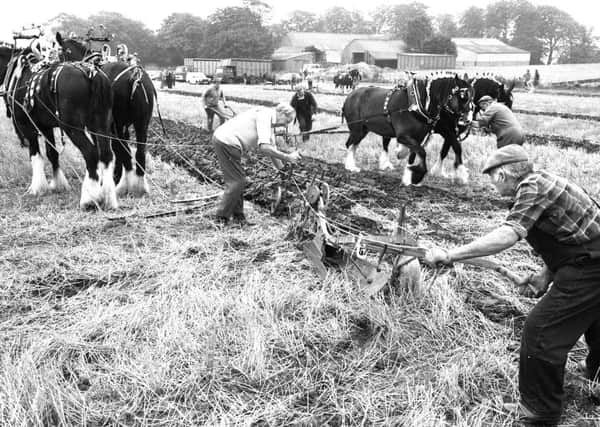

Put so simply it might be hard to understand why, of all agricultural activities, ploughing has captured the imagination and why ploughmen in myth, poetry and prose are imbued with a mystical understanding of people and nature.
It’s probably because ploughing and harvesting form part of the cycles of regeneration and death: no one was closer to the land than the ploughman.
Advertisement
Hide AdAdvertisement
Hide AdRituals also suggested links with ancient gods: in some counties it was traditional to pour the last of the ploughman’s drink of choice from his ‘baggin,’ usually tea or water but sometimes beer, as a gift for the gods, or in Ireland for the ‘little people.’
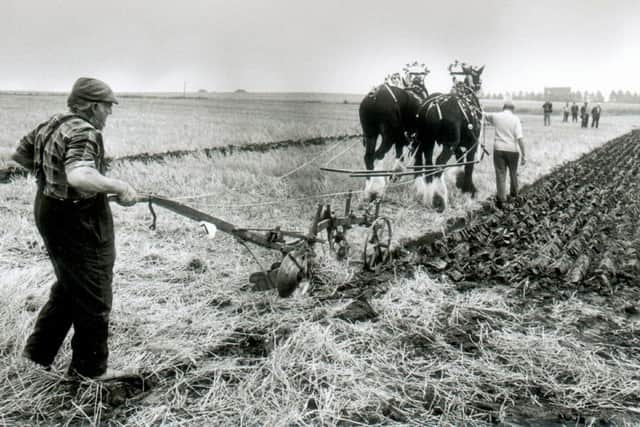

Superstitions also attended the harvest. Ancient cultures and religions made corn dollies out of the last stalks of the harvest.
These harvest emblems were thank-offerings, or idols, dedicated to the pastoral gods, and it is from “idol” that the word “dollies” is derived.
All parts of Britain had their own tradition when cutting the last handful of corn, though it varied from county to county.
Advertisement
Hide AdAdvertisement
Hide AdSome threw their sickles until the last clump was flattened; others trampled it down as they believed evil spirits hid there.
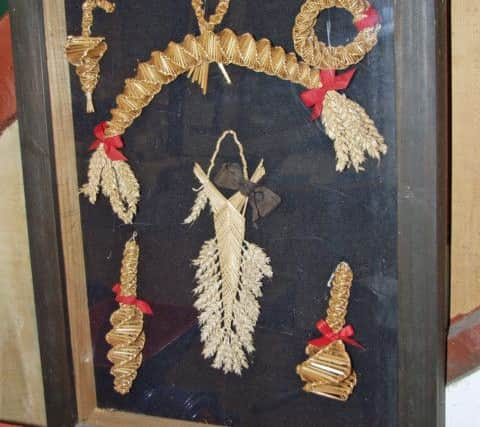

Other counties also believed it sheltered spirits, but good ones who crept there after the rest of the corn was cut, and slept there over the winter until coming to life again in the spring and waking the newly sown seed. But for the harvest to be successful, the earth had to be carefully prepared. Early ploughs, now called a ‘chest plough’ or ‘push plough’, were pushed by humans, but in Saxon times ploughs were rather unkindly tied to the tails of oxen, a method which in Ireland was only outlawed in the 17th century.
As the population grew and experiments with farming led to increased food production, while the principles of ploughing remained the same, ploughs moved on from being simple wood and iron structures made by the local blacksmith. Variants were made according to the crops grown, the types and depth of soils and so on, and were often named after the area they were designed in and for: the Scotch plough, the Newcastle plough, the Rotherham plough, and so on.
In 1803 Robert Ransome of Suffolk discovered that chilling metal so that it cooled quickly meant that the edge of the plough, formerly made of wrought iron, could be kept sharp for longer. This was the boost Ransomes needed to make them the leading firm in agricultural implements, and in the middle of the 19th century two of their ploughs, the YL and the Newcastle series, became the most popular ploughs in the country and can still be seen today (pictured inset).
Advertisement
Hide AdAdvertisement
Hide AdBefore the days of weed killers and artificial fertilisers, ploughing was an even more important skill than it is nowadays: weeds had to be buried to kill them, turf and unrotted manure had to be turned over to the same depth. Tests of the ploughman’s skill evolved in the 19th century in the form of ploughing matches up and down the country.
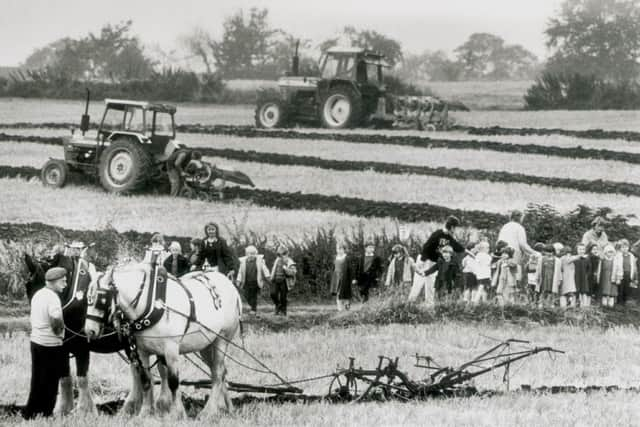

For a match a ploughman had to show his plough was in good order, the furrows should be straight and parallel and all the same height, the ridges should be equal in appearance, as should the hollows and, after ploughing, the ground should feel equally firm in all places.
According to Country Life magazine writer Ian Niall, to win a match, “the ploughman had to cut the furrow like a moist paring of cheese and leave it ironed to perfection, each furrow against the previous one and every one as identical and as straight as a round rush.”
Early ploughing matches tended to be local affairs: a plough had to be transported, probably on a cart, with his team of horses in tow. A competition would take up a lot of his day and he would need to be ploughing his or his landlord’s land the day before and after.
Advertisement
Hide AdAdvertisement
Hide AdThe Rawcliffe Farmers’ Club, out of which grew Great Eccleston Show, ran a regular ploughing match from the 1840s.
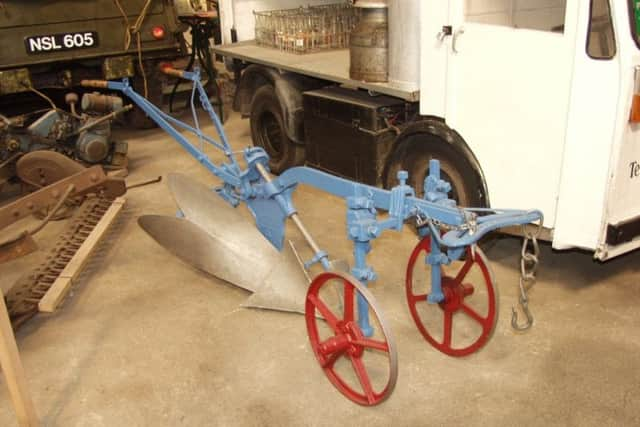

In 1854 the ploughing match was held at the farm of Richard Parker, Sowerby House, St. Michaels. Each ploughman had to complete his allotted piece of ground with two horses and within a time limit.
The winner, perhaps a tactful choice, was Mr Thomas Sherdley, the ploughman of Mr Wilson-France of Rawcliffe Hall.
At the end of the match the company reassembled at the Brown Cow, St Michaels, for a meal, speeches and comic and sentimental songs.
Advertisement
Hide AdAdvertisement
Hide AdA Suffolk variant on the ploughing match was the furrow-drawing match. A ploughman would make a single furrow in the ground, the judges would put sticks at the beginning and the end and then measure any deviation off the straight – the straightest furrow was the winner.
A ploughman had a critical eye, especially when considering the work of other ploughmen, and it was traditional for ploughmen to stroll the parish on their Sundays off and inspect the work of others. If a ploughman had left a bent furrow, or worse a ‘hog’s trough,’ a hollow between two furrows, his shame would be spread in pub and church gossip.
In Pilling, symbolism was used to point out a ploughman’s perceived failures: a pair of clogs would be hung on the fence of a badly ploughed field to indicate the inadequate ploughman had better walk away from the district.
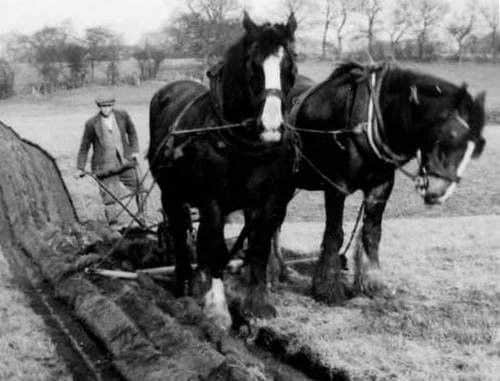

When the furrows were markedly not straight, more gruesomely, a hare would be shot, its neck broken and then it would be put in a furrow. Hares ran down the furrows, the implication was that the hare had broken its neck running against the crooked side of the ridge.
Advertisement
Hide AdAdvertisement
Hide AdA legend in the Lawrenson family of Pilling has it that great-grandfather James had a field with a pond or “pit” in the middle, and he made sure the furrows either side of the pit matched up to prevent the disapproval of the village.
Attempts were made to introduce steam power into ploughing, but the small and mossy fields of the Fylde did not really lend themselves to such power.
A demonstration was arranged for the Rawcliffe Hall estate in 1857. It should have been on October 7, but Prime Minister Palmerston had designated that date a day of “National Humiliation” as a response to the Indian Mutiny.
The steam plough exhibition, after the postponement, suffered its own two days of humiliation.
Advertisement
Hide AdAdvertisement
Hide AdA large crowd, with spectators from as far away as Blackburn, attended, but apparently a part was missing, the blame for which was laid firmly at the feet of the railway company.
The crowd made its annoyance clear: “great indeed was their chagrin, and loud and deep their anathemas.”
The machine was fully assembled the next day and the trial attempted again, and the engagingly terse article reported that it, “performed some work satisfactorily, but the trial was brought to a premature close by the occurrence of an accident.” Unsurprisingly, steam ploughing was never a feature of Fylde farming.
Vintage ploughing matches continue to this day, though it is rare now that a team of horses makes an appearance.
Advertisement
Hide AdAdvertisement
Hide AdThree in our area occur on consecutive weeks in September, and visitors are always welcome to see this ancient and skilled art for themselves:
l Ellel Ploughing and Hedging Association ploughing match at Rougholme Farm, Skitham Lane, Pilling PR3 6BD on Saturday (September 1).
l National Vintage Tractor & Engine Club, Lancashire Group, Ploughing Match, Sunday, September 9 at Hollyfold Farm, Bickerstaffe, St Helens L39 0HJ
l The Fylde Country Life Preservation Society match at the farm of Messrs C and A Thompson, Turnover Farm, Rawcliffe Road, St Michaels on Wyre PR3 0UE on Sunday, September 16. All matches start at 10 am.